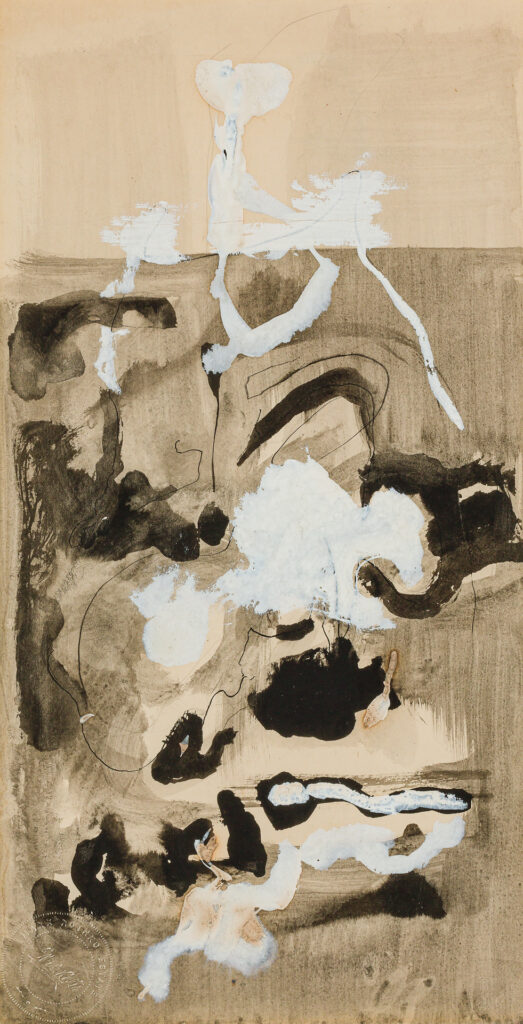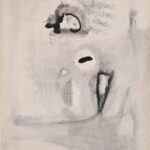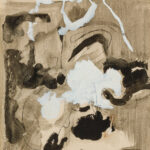Untitled
c. 1948
Brush and black ink, watercolor and gouache on paper
Embossed with the artist’s estate stamp lower left
17 1/2 x 9 inches (44.45 x 22.86 cm)
Ex-collection:
The artist;
Roy Edwards, Madison Heights, Michigan (an assistant in Rothko’s studio)
Gertrude Kasle Gallery, Detroit, Michigan
Acquired from the above, 1975; Christie’s, New York, New York, November 16, 2000, lot 101
The Jeanne and Carroll Berry Collection, Atlanta, Georgia until 2020
Exhibitions:
Ackland Art Museum, University of North Carolina, Chapel Hill, North Carolina, March 4 – May 31, 2007; Georgia Museum of Art, University of Georgia, Athens, Georgia, ‘Advanced and Irascible: Abstract Expressionism from the Collection of Jeanne and Carroll Berry,’ Jan. 14 – Apr. 30, 2017
Scholar Bonnie Clearwater in her book Mark Rothko: Works on Paper, notes “The years 1947-1950 were a crucial period in Rothko’s development. Abstraction finally supplanted Surrealism in his paintings…the small number of extant works on paper from this transitional period indicates that Rothko concentrated on the production of paintings on canvas. In the 1947 watercolor Fantasy the amorphous masses of color abandon the strict geometry of his Surrealist paintings.” Fantasy from 1947 is akin to the example offered here from the same period. As Clearwater goes on to say “…In general, these works on paper were created with techniques similar to those seen in the Surrealist watercolors. Rothko still used black ink in these watercolors, but less calligraphically; and although he used some sgraffiti in some of the works, their surfaces are less tactile.”
This shift away from calligraphy and texture immediately foreshadowed Rothko’s mature style. By the mid 1940s, Rothko’s work became completely abstract. He had joined the group of artists including Jackson Pollock, Clyfford Still, Willem de Kooning, Helen Frankenthaler, Barnett Newman and others, who became known as the Abstract Expressionists. This group was united by their abilities to paint feelings of raw emotion and from their appreciation and subsequent rejection of the modern techniques of early 20th century Europe such as Surrealism, Cubism and Bauhaus.
Like many of his fellow Abstract Expressionist artists, Rothko preferred not to title his works. As evidenced in the current offering, “Untitled, circa 1948”. They wanted to avoid influencing the viewer, instead they numbered their works and believed that the art could speak for itself.


 Untitled
Untitled
 Untitled
Untitled